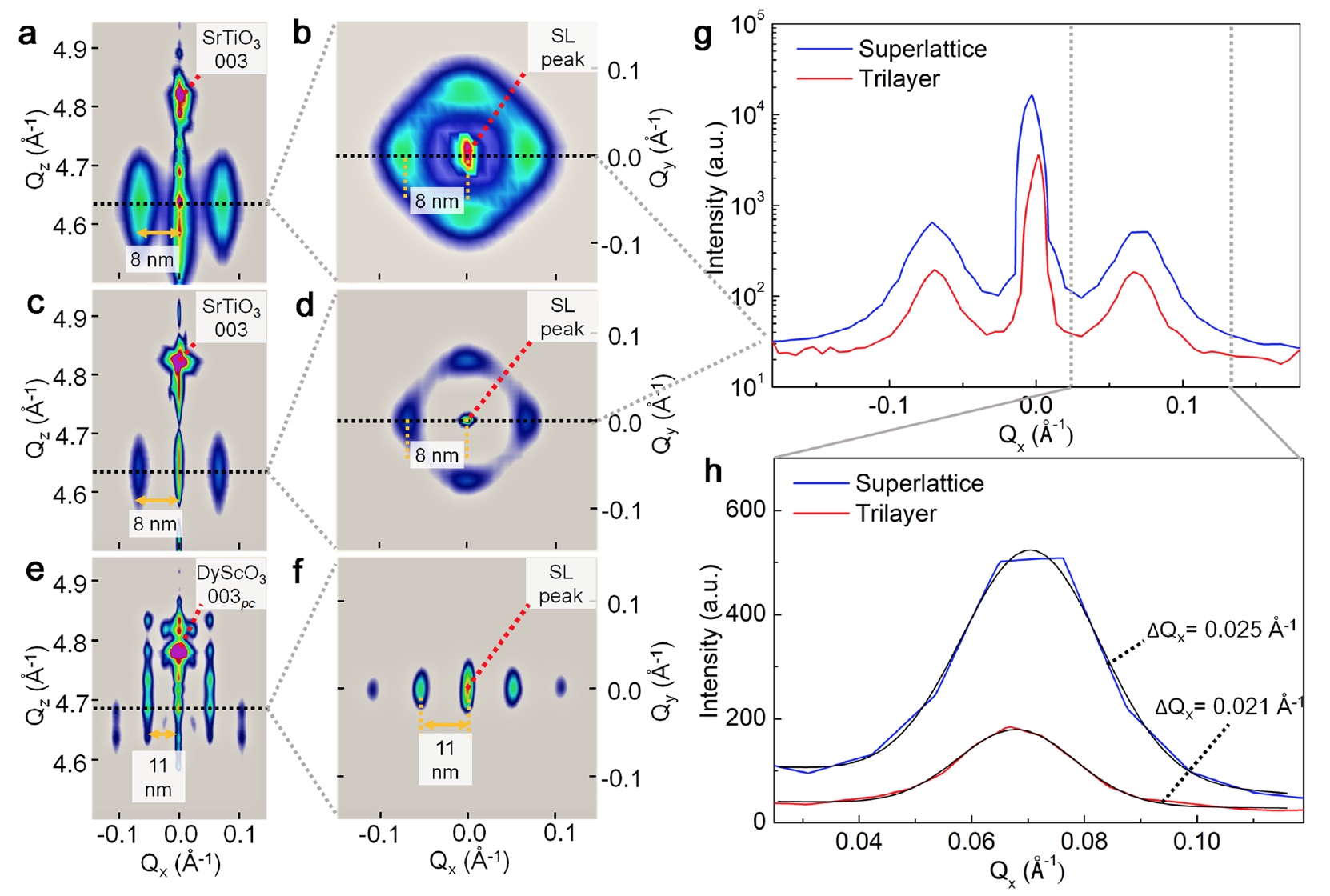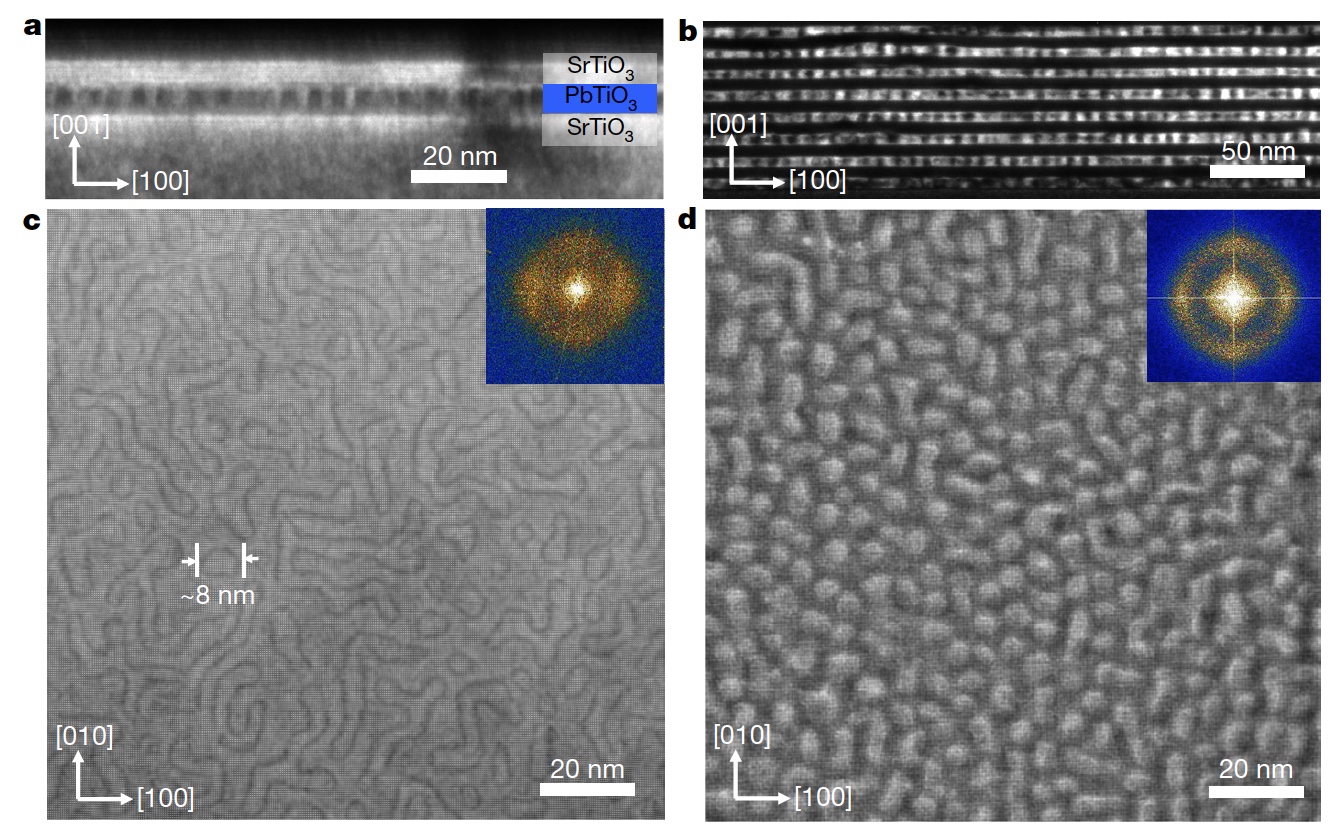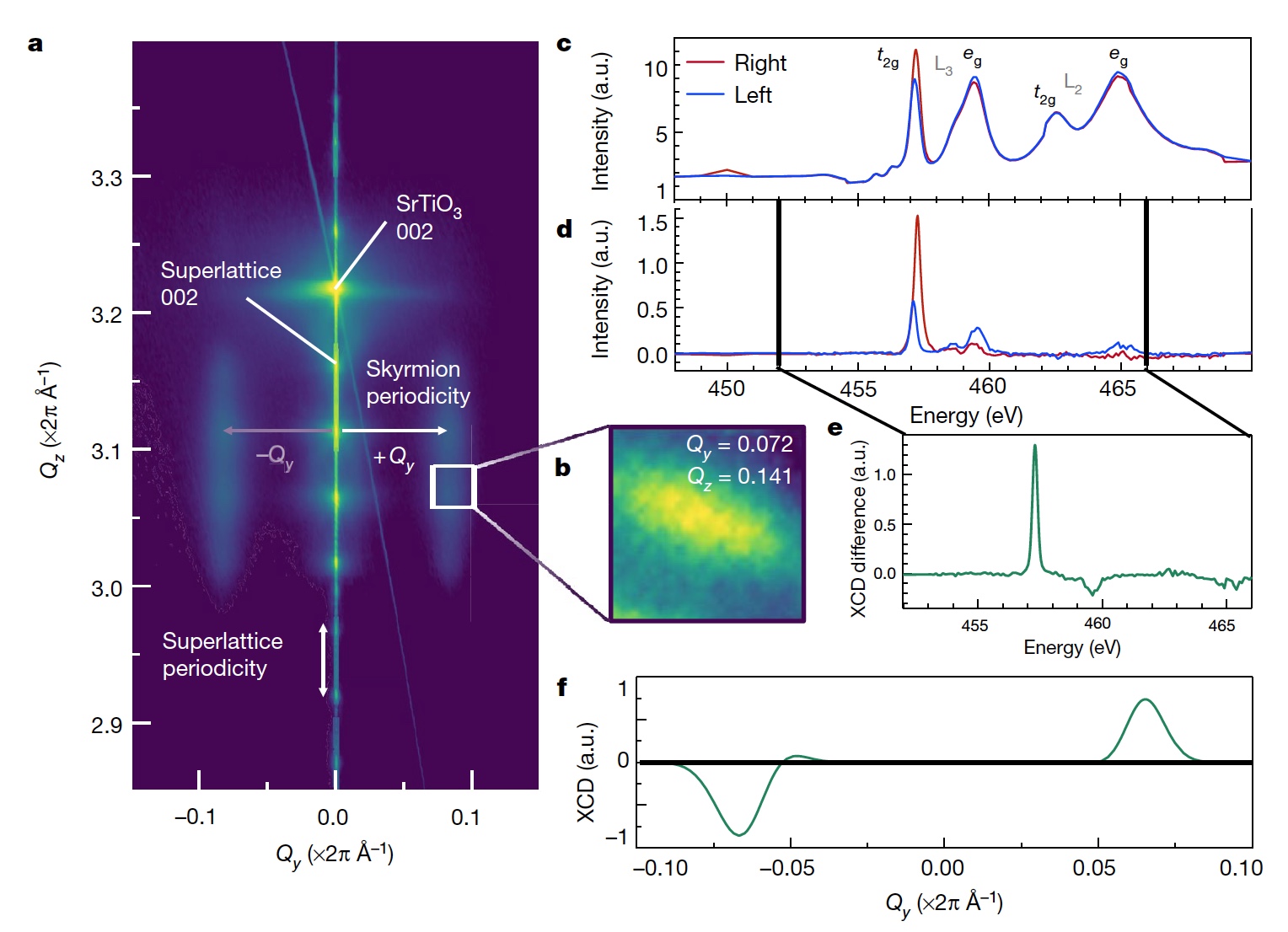Skyrmion skyrmion discord: three-dimensional polar skyrmions in ferroelastics

The world around us seems chaotic and unpredictable, but this is not entirely true. Various processes are the fruits of the activities of certain physical or chemical phenomena obeying the laws unchanged since the beginning of time. The curiosity of a person allowed us to answer many questions, to understand how, what and why is happening. And it is becoming increasingly difficult for scientists to get at least a little surprise during their research. But we know far from everything, and far from everything is what it seemed earlier. Lyrics aside, today we will get acquainted with a study in which a group of scientists discovered the presence of polar skyrmions in the material they designed. What is unusual about this, how do these skyrmions differ from magnetic ones and why are scientists so interested in studying this phenomenon? We will find answers to these and other questions in the report of the research group. Go.
The basis of the study
First of all, it is worth recalling what a skyrmion is and what it is eaten with. Earlier, we have already touched upon the subject of skyrmions in previous articles:
What is a magnetic skyrmion?
')
For a start it is worth recalling that the atoms of magnetic materials with their own magnetic moment of the electron, behave like magnets, in simple words. When matter is magnetized, the spins of atoms line up in a certain way, which makes this substance a magnet.
In 2009, researchers discovered a very fascinating feature of individual atoms. Their backs curled into funnels (whirlwinds). Such a structure was named Skyrmion, in honor of the British physicist Tony Skyrme, who back in 1962 described a mathematical model of vortex spins.

Image a - skyrmion "hedgehog", b - spiral-shaped skyrmion.
One of the important IT features of skyrmions is their topological stability. The bottom line is that any disturbance can change the direction of the spins, but the twist will remain the same. Thus, it is possible to store information in binary form: 0 - there is no skyrmion, 1 - there is a skyrmion. And given the nanometer size of such structures, the density of information storage can also increase significantly.
Coming out of this information, the existence of anti-scyrmiones was also assumed, whose topological charge would be opposite to ordinary skyrmions.
Two-dimensional spin structures have a non-trivial topology, which is responsible for their specific level of stability. Such structures are characterized by topological charge:

where m = m (r, t) is the direction vector of the magnetic moments in time and space.
Skyrmions (q = 1 ) and anti-scyrmions ( q = -1 ) have opposite charges and can occur in pairs if a uniform state deformation occurs ( q = 0 ). The description of the dynamics of skyrmions and anti-skirmions can be approximated if the core is considered stationary, which reduces the required number of variables to describe their movement.
The formula below describes the damped gyrotropic movement of the position of the nucleus (X) of skyrmions and anti-scyrmions in response to the applied force (F):

G, equal to -qG0z, is a heating detector;
α is the damping constant;
D0 is a structural factor.
The dynamics in the above equation are non-Newtonian, and therefore the gyrotropic response depends on q and dictates the direction in which the core moves.
')
For a start it is worth recalling that the atoms of magnetic materials with their own magnetic moment of the electron, behave like magnets, in simple words. When matter is magnetized, the spins of atoms line up in a certain way, which makes this substance a magnet.
In 2009, researchers discovered a very fascinating feature of individual atoms. Their backs curled into funnels (whirlwinds). Such a structure was named Skyrmion, in honor of the British physicist Tony Skyrme, who back in 1962 described a mathematical model of vortex spins.

Image a - skyrmion "hedgehog", b - spiral-shaped skyrmion.
One of the important IT features of skyrmions is their topological stability. The bottom line is that any disturbance can change the direction of the spins, but the twist will remain the same. Thus, it is possible to store information in binary form: 0 - there is no skyrmion, 1 - there is a skyrmion. And given the nanometer size of such structures, the density of information storage can also increase significantly.
Coming out of this information, the existence of anti-scyrmiones was also assumed, whose topological charge would be opposite to ordinary skyrmions.
Two-dimensional spin structures have a non-trivial topology, which is responsible for their specific level of stability. Such structures are characterized by topological charge:

where m = m (r, t) is the direction vector of the magnetic moments in time and space.
Skyrmions (q = 1 ) and anti-scyrmions ( q = -1 ) have opposite charges and can occur in pairs if a uniform state deformation occurs ( q = 0 ). The description of the dynamics of skyrmions and anti-skirmions can be approximated if the core is considered stationary, which reduces the required number of variables to describe their movement.
The formula below describes the damped gyrotropic movement of the position of the nucleus (X) of skyrmions and anti-scyrmions in response to the applied force (F):

G, equal to -qG0z, is a heating detector;
α is the damping constant;
D0 is a structural factor.
The dynamics in the above equation are non-Newtonian, and therefore the gyrotropic response depends on q and dictates the direction in which the core moves.
Here it is worth clarifying: polar skyrmions are topological formations consisting of opposite electric charges, that is, dipoles.
In this case, the most interesting feature is the fact that these bubbles of polar skyrmions are electrical analogs of magnetic skyrmions, but not magnetic skyrmions as such. The better studied polar skyrmions, the more we will have the tools to manipulate them and, consequently, the tools to control chirality and even over the negative capacity.
Research in the field of spintronics and skyrmionics is actively considering magnetic skyrmions. However, the polar skyrmions did not receive this honor.
How did scientists come to the discovery that we are considering today? The fact is that complex topological structures are a great place to study and search for the phenomena and exotic phases arising in them. Scientists by changing epitaxial restrictions discovered bubbles of polar skyrmions at room temperature in a layer of lead titanate (PbTiO 3 ), covered on both sides with layers of strontium titanate (SrTiO 3 ), in other words in the heterostructure (PbTiO 3 ) n / (SrTiO 3 ) n .
Behind this study lies the theory that it is quite possible to obtain bubbles of nanodomains and skyrmion-like topological structures in ferroelectrics * through the interaction of elastic, electrostatic and gradient energies.
Ferroelectricity (or ferroelectricity ) * is the occurrence of spontaneous polarization in a crystal at a certain temperature, even without an external electric field.The samples for the study - [(PbTiO 3 ) n / (SrTiO 3 ) n ] m (n = 12–20, m = 1–8) - were made on single-crystal substrates of strontium titanate (SrTiO 3 ) by pulsed laser spraying in the aggregate with fast electron diffraction.
A ferroelastic called monocrystalline substances, whose crystal lattice can spontaneously deform with decreasing temperature and phase transition.

Analysis of the topology (above) by RSM mapping showed ring formations (images b and d ) during intensity distribution. Manifestations of such a topological phenomenon in reverse space may be due to ferroelectric nano domains.
RSM analysis also showed consistency of the topologies of the three-layer structure and the SrTiO 3 substrate, where the ring size and its width in the ( g , h ) plane are almost the same. In this case, there is a strong difference from the periodic vortex nanodomains, which were previously observed on DyScO 3 ( e , f ).
It was necessary to find out the source of such a diffraction pattern, for which the TEM (transmission electron microscope) imaging method was used.

Image number 1
TEM three-layer images (m = 1), i.e. The investigated heterostructure and superlattice (m = 8) are shown in images 1a and 1b , respectively. From them we can notice the intensity modulation with a length scale of about 8 nm, which indicates the formation of anti-parallel polar regions.
The PREM images (a transmission raster electron microscope) of a three-layer made it possible to determine the presence of a mixture of round (about 8 nm in diameter) and elongated elements ( 1 s ). But in the superlattice arrays dominated only from round elements ( 1d ).
Scientists believe that such a topology is quite unusual, due to the fact that the domain walls are divided into many areas of closer order along the set of planar directions, which leads to distinct circular and elongated elements. Previously, this was not observed.
The inserts (upper right corner at 1c and 1d ) show x-rays after a fast Fourier transform, in which four petals with rotational symmetry are clearly visible, that is, with neel-like rotation of polarization.
Next, scientists carried out a series of mathematical calculations to confirm that the observed topology is very similar to magnetic skyrmions and has an exact and definable skyrmion number. Calculations showed that local electric dipoles constantly rotate in the plane and outside of it at the boundary between PbTiO 3 and SrTiO 3 ( 2a and 2b ).

Image number 2
In the upper and lower parts of the PbTiO 3 layer, the dipoles have planar polarization connecting the upper regions with divergent polarization and the lower polar regions with converging ( 2c , 2e ). A seal of the twisting polarization is also observed in the mid-plane x - y of the PbTiO 3 ( 2b , 2d ) layer.
An analysis of the polarization texture on the upper and lower interfaces of PbTiO 3 / SrTiO 3 ( 2c , 2e ) made it possible to identify “hedgehog” skyrmions, while “spiral” ( 2d ) skyrmions were found inside the PbTiO 3 layer.
Scientists also determined the polarization texture, where the local order parameter has zero rotation, but positive divergence (vectors are outward) in the upper plane ( 2c ). In the lower plane, the opposite situation occurs ( 2e ): negative divergence takes place (vectors are directed inward). In the middle layer, the planar polarization component appears only as a component parallel to the domain wall, as in ordinary spiral-shaped skyrmions ( 2d ).
From these observations, scientists concluded that three-dimensional bubbles of polar skyrmions are a kind of evolution of two-dimensional skyrmions along the film normal: from top to bottom of the PbTiO 3 layer, respectively, from the hedgehog skyrmion to helix and again to the hedgehog. These topological structures, despite their evolution, remain equivalent, since they can transform into each other due to continuous deformation.
The next step in the study of an unusual sample with unusual properties was the study of the atomic structure of the skyrmion bubble. For this, polarization mapping was carried out (image No. 3 ).

Image number 3
The mapping of the titanium displacement vector in the images obtained earlier showed the presence of a microscopic displacement field around a single bubble of the skyrmion. The vector map ( 3a ) corresponding to this data shows the area in which the reverse bias of titanium moves from the edge to the center, which resembles the structure of a hedgehog skyrmion.
In the cross section ( 3b ), a cylindrical polar region with antiparallel (up-down) polarization is clearly visible. The polarization vector rotates at the boundaries near the PbTiO 3 / SrTiO 3 interface, which is consistent with the polarization divergence observed in image 3a . By combining both types of images (two-dimensional and with a cross-section), scientists have identified a similar structure in the upper part of the PbTiO 3 layer.
Through 4D-PREM analysis of the superlattice [(PbTiO 3 ) 16 / (SrTiO 3 ) 16 ] 8 , an image ( 3d ) and a polar order map were obtained using a probability flow ( 3e ). In order to confirm the observations, scientists conducted a simulation of the propagation of the beam through the structure of the model shown in Figure 2. Simulation results are shown at 3f and 3g .
The combination of these observations suggests the formation of a polar skyrmion structure, the components of which are similar to the “hedgehog” structure, where the direction of polarization rotates from top to bottom from the center to the edge of the skyrmion. The divergent and convergent polarization rotation in the upper and lower parts of the polar structure resembles the spin configuration of Néel skyrmions in ferromagnets. Such structures should, according to scientists, have non-standard properties, such as chirality and a zero skyrmion number.
It was necessary to verify why the X-ray diffraction of the superlattice [(PbTiO 3 ) 16 / (SrTiO 3 ) 16 ] 8 ] was carried out.

Image number 4
According to the simulated structure (image No. 2), an imaginary line along any direction in the central plane of each PbTiO 3 layer intersects only the Bloch domain walls, as a result of which local polarization exhibits spiral rotation along this line. Such a texture of spiral polarization is almost identical to the configuration that occurs in polar-vortex arrays. Accordingly, this should lead to a similar dichroic signal from the chiral electronic structure.
An RSM study showed the presence of two sets of sequencing ( 4a ). The first is that along the direction outside the plane there are regular peaks associated with the periodicity outside the plane of the superlattice (about 12 nm). Second, there are satellite peaks (one of them on 4b ) in the perpendicular or planar direction, corresponding to the planar ordering of the polar structures (about 8 nm). Since the X-ray energy is tuned through the absorption edges of titanium L 3 and L 2 , the intensity of the diffraction peaks of the satellite is sensitive to periodic distortions, in particular to the chiral signs of anisotropic titanium orbitals.
By measuring the spectra with right and left circular polarized light ( 4c ), separating the background fluorescence ( 4d ) and taking into account the difference between the two spectra obtained ( 4e ), the scientists measured x-ray circular dichroism. The presence of pronounced dichroism on the edge of L 3 indicates the presence of chiral structures. Moreover, circular dichroism was observed both in the superlattice and in the three-layer.
Scientists explain the non-magnetic nature of the observed circular dichroism by the chiral configuration of charge quadrupole moments.
In addition to the measurements described above, scientists also verified the intensity of resonant scattering and circular dichroism as a function of the lateral scattering vector ( 4f ). In theory, the presence of Bloch structural components should lead to the violation of the Friedel law due to the violation of inversion symmetry along the plane. It is for this reason that the observed asymmetry in the intensity of the mirror diffraction peaks is evidence of the Bloch component of polarization in the skyrmion bubbles.
Summing up all the observations, calculations and measurements, it can be said with confidence that there are bubbles of polar skyrmions in the heterostructure under study.
For more detailed acquaintance with the nuances of the study I strongly recommend to look into the report of scientists.
Epilogue
This study made it possible to detect unusual skyrmion structures in the PbTiO3 layer. These skyrmions are electric, not magnetic, as we used to call them earlier. In addition, they combine the characteristics of both Neel and Bloch.
Scientists note that such a three-dimensional skyrmion structure is very different from the well-known two-dimensional. Skyrmion bubbles can be moved using an electric field, which gives more control and the ability to use such structures where it was previously impossible.
In the future, scientists plan to use this study in their next work on spin-charge coupling in superlattices. The practical application of such technologies is not yet being discussed, since much remains to be researched. One thing is clear - by gaining control over the structure of any material and its properties, you can achieve incredible results.
Thank you for your attention, stay curious and have a good working week, guys!
Thank you for staying with us. Do you like our articles? Want to see more interesting materials? Support us by placing an order or recommending to friends, 30% discount for Habr's users on a unique analogue of the entry-level servers that we invented for you: The whole truth about VPS (KVM) E5-2650 v4 (6 Cores) 10GB DDR4 240GB SSD 1Gbps from $ 20 or how to share the server? (Options are available with RAID1 and RAID10, up to 24 cores and up to 40GB DDR4).
VPS (KVM) E5-2650 v4 (6 Cores) 10GB DDR4 240GB SSD 1Gbps before summer for free if you pay for a period of six months, you can order here .
Dell R730xd 2 times cheaper? Only we have 2 x Intel TetraDeca-Core Xeon 2x E5-2697v3 2.6GHz 14C 64GB DDR4 4x960GB SSD 1Gbps 100 TV from $ 199 in the Netherlands! Dell R420 - 2x E5-2430 2.2Ghz 6C 128GB DDR3 2x960GB SSD 1Gbps 100TB - from $ 99! Read about How to build an infrastructure building. class c using servers Dell R730xd E5-2650 v4 worth 9000 euros for a penny?
Source: https://habr.com/ru/post/451724/
All Articles